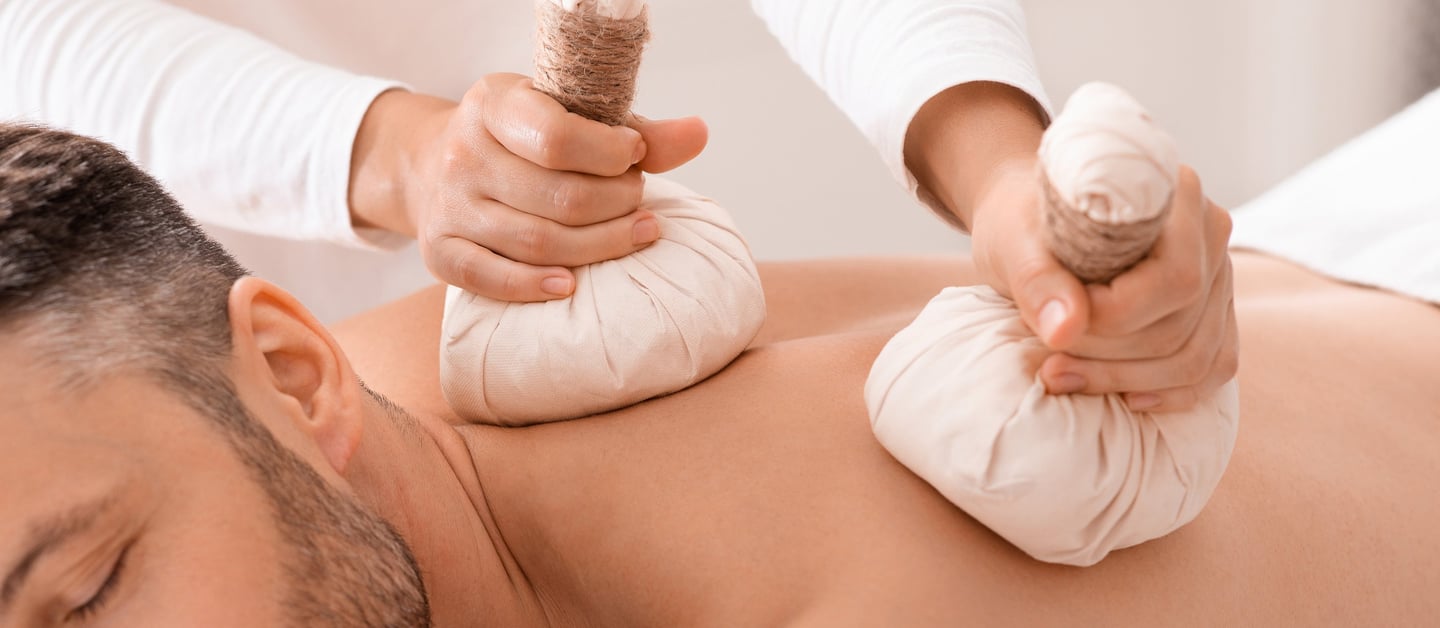Common Herbs Used in Herbal Massage
11/13/20243 min read


Herbal massage, in the first place, is one of the safe and natural ways to induce relaxation, relieve pain, enhance circulation, and promote general wellness. Through the healing power of herbal ingredients, herbal massage offers holistic revitalization. If you haven't tried herbal massage yet or just feel like knowing which herbs are most commonly used, here's a guide to some of the most popular and effective herbs used in this therapeutic practice.
Lavender
Benefits: Relaxation, stress relief, reduction of muscle tension, and promotes quality sleep.
Lavender is one of the most used herbs in massage therapy. The herb has soothing and calming properties. It relaxes the muscles, removes all tension, and revives the body. Lavender oil is also widely used in aromatherapy; it calms the mind and body while helping to relieve tension, stress, and anxiety. A relaxing and restful sleep from lavender makes this herb a good choice for an evening massage.
How it Works:
Lavender's natural constituents, for instance linalool, has a sedative effect that soothes the nervous system. Furthermore, it possesses anti-inflammatory and analgesic properties to relieve achy muscles and joint aches.
Peppermint
It has advantages such as pain relief, refreshing of the skin, circulation, and energizing the body.
Peppermint is an invigorating herb that can have a cooling and refreshing effect on the skin. Very common in herbal massages because it will soothe away the pain and soreness in muscles, headaches, and tension while refreshing the mind and body, menthol in the peppermint oil has soothing and cooling effects which help reduce soreness and increases blood flow.
How It Works
Peppermint is a stimulant to blood circulation and has analgesic properties, hence good for the treatment of conditions such as sore muscles, headaches, and tensed backs. The menthol also deals with respiratory problems when applied in a massage.
Chamomile
Benefits: Serenity, healing of skin, anti-inflammatory, and stress-relieving activity.
But one of the most popular soothing effects that chamomile has had over the body and mind is why people opt for using it in a massage session, which aims to help remove their stress and anxiety.
Chamomile oil is also an antiseptic; therefore, it can be helpful in supporting eczema or acne conditions. This oil helps relieve pain by fighting inflammation as well.
How does it work?
Chamomile: It is comprised of the sedative apigenin, which is known for its anti-inflammatory abilities. This tea provides relaxation and inflammation relief-it even soothes irritated skin.
Eucalyptus
Benefits: Relief from respiratory issues, pain, and keeps the circulation healthy.
This is also a key herb that often leaves its user with a felt rejuvenation, certain roots being used for their marvelous strength in the clearing of the sinuses to aid one in breathing. Eucalyptus oil is primarily utilized in herbal massages especially those towards the relief of respiratory conditions such as congestion, asthma or colds. It can also be used in the treatment of pain in order to ease sore muscles and joint pains.
How It Works
Eucalyptus oil contains eucalyptol, which helps in widening the airways and improving circulation while reducing any inflammation. It mainly brings relief for muscular and joint pain due to its cooling and analgesic effect on the body.
Rosemary
Benefits: Promotes improved circulation, mental clearness, and muscle relaxation.
Rosemary is also an herb useful in regulating blood circulation and easing pain in the muscles, especially in tension and stress. It is one of the substances most used in therapies for people who look quite exhausted, tense, or emotionally drained. Rosemary also eases digestion and helps relieve head pains.
How It Works:
Rosemary has Rosmarinus acid and camphor within the plant, which give off anti-inflammatory and analgesic properties. It relieves pain in the body and can stimulate the circulatory process and improve mental acuity.
Ginger
Benefits: Its scientific name is Zingiber officinale. Benefits include pain relief, anti-inflammatory, and circulation.
Ginger has been a great herb to alleviate body pain and inflamed areas. This herbal massage oil is applied quite often in order to cure joint pains and arthritis as well as to prevent muscle stiffness. Here, the tension can be relieved and the circulatory system improved, hence very fit to warm up during colder seasons.
How It Works
Ginger is a storehouse for gingerol, a compound that contains powerful anti-inflammatory and analgesic action. It creates a warming sensation that calms down muscle spasms and improves blood circulation.
Arnica
Benefits include relief from pain, reduced bruising, decreased inflammation, and restoration of muscles.
Arnica is one of the first herbs anyone will look for in an apothecary for bruising, strains, sprains, and muscle soreness. It is commonly applied as part of a massage following a workout or injury to reduce inflammation, ease pain, and accelerate healing times. Arnica oil is extremely potent in areas of deep muscle tension that are massaged.
How It Works:
And within Arnica, there is helenalin that works as an anti-inflammatory agent in order to reduce swelling, bruising, and pain. However, it also stimulates circulation to provide healing faster.


